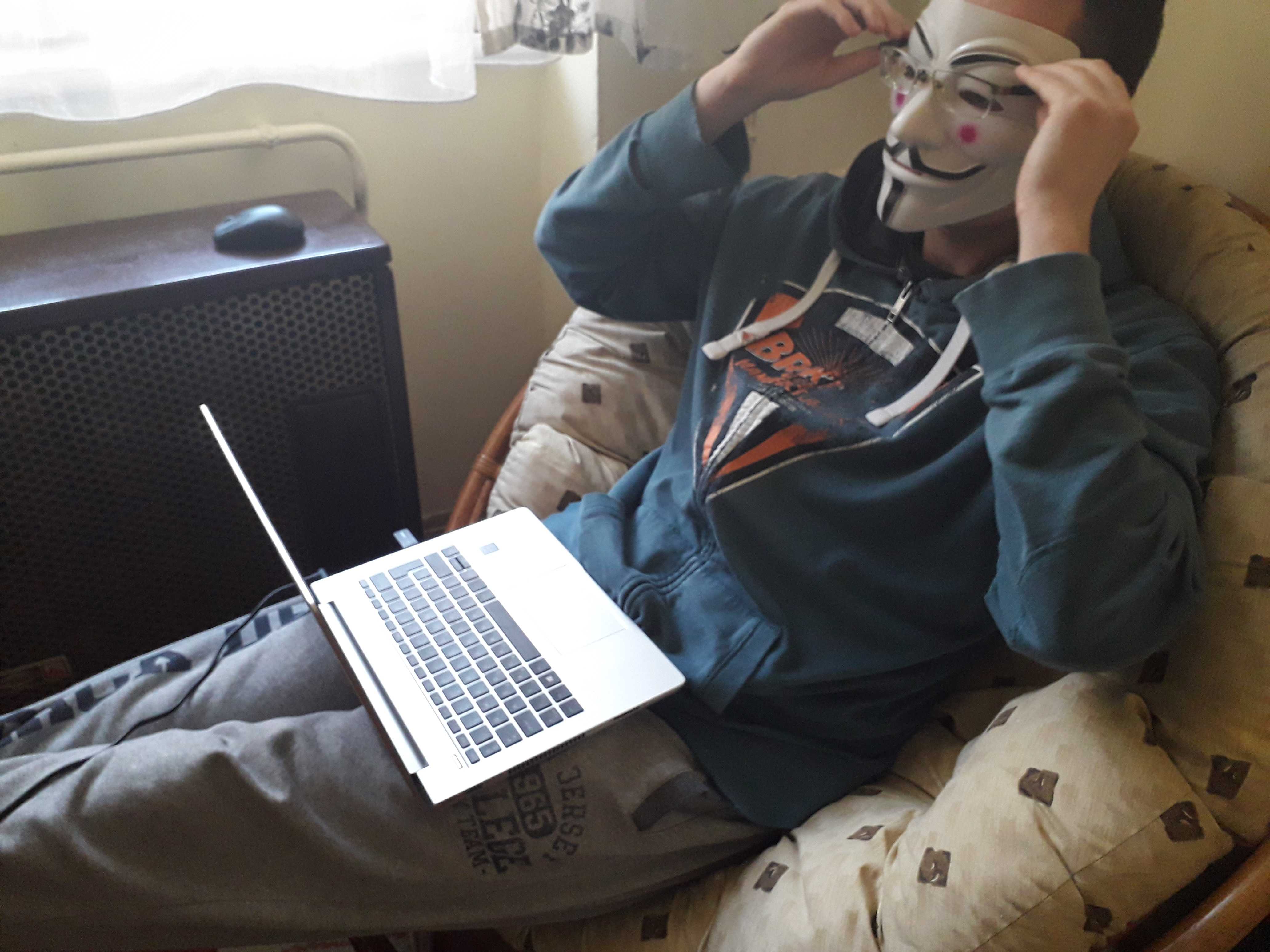Tech leaders reflect on the current situation in the latest episode of the Level-up Engineering podcast.
 |
 |
 |
This Is How We Became Fully Remote In One Day
COVID-19 Case Study by Coding Sans

COVID-19 has totally disrupted our lives.
It’s crazy.
This coronavirus certainly gives a new layer of meaning to the phrase batshit crazy.
Naturally, it’s in your work too. We all have an endless stream of questions about what to do, how and when.
There isn’t enough proven information going around yet, so I can’t give you definitive answers. But I will show you how our company, Coding Sans, is handling the situation at the moment. We also asked other companies for insights to share.
Contents:
|
|
|
|
| |
|
|
| |
||
The first step: everyone works from home

On March 13, we switched the entire company to working fully remote. At this time, there were only a couple dozen proven COVID-19 cases in the country, so there were no restrictions enforced or recommended by the authorities.
The limitations that were finally put in place by the government would have allowed us to keep the office open, but our CEO made the decision to stay fully remote. We took maximum precaution at the earliest moment to protect all employees, their families and the wider community.
Switching to remote work doesn’t just mean working from home. There's a lot to it, so in the following part of the post, we will show you what we did and how you can do it too.
How to go fully remote in a day 101

Luckily, remote work isn’t completely new for us. Before the coronavirus pandemic, every Coding Sans employee had a 1-day home office option each week. Sometimes, this was more, even unlimited with the right reason, but our people actually prefer being in the office.
Fundamentally, we’ve been using on-site methods for most of the workflows, so remote work is new for many of our developers. Staying remote for an extended period of time requires changes, so we took some steps.
We put together a quick remote guide, helping every team member adjust to the new remote work period:
1. Keep a daily routine:
- Put on normal clothes
- Dedicate a spot to do work from
- Ideally in a separate room from where you rest
This is important so you have an easier time separating rest from work. Your brain is wired in such a way that your environment heavily influences your thoughts. If you start working from your bed, you’ll start to feel sleepy, while on the other end you'll likely start thinking about work stuff when it’s time to rest.
Putting on normal clothes is the same principle. You make yourself feel like you’re going to do work instead of hanging out at home. It’s another layer you can add to keep your personal and professional life apart, while they’re both stuck at your home.
Look at this guy:

You don't see him in the office wearing sweat-pants, but he scores some points for wearing the company uniform headger at least.
(The glasses, of course.)
Also that spot doesn't look like it's dedicated for work, but let's give him the benefit of doubt.
Solid 5/10, for effort. It's not too bad for a noob COVID-19 remote worker!
2. Stick to the normal schedule
- 8 hours of work is still expected
- Core time is 10:00-16:00
- If you’re unavailable during core time, let your team know
On the one hand, this is to keep your work separated from your personal life. On the other, it’s to keep the team’s work synchronous even with everyone staying home.
Meetings, pair programming, mentoring and just offering a helping hand to your colleagues at any time require a level of synchronicity. So, we picked this timeframe to make sure we have options to make all this happen. We live in the same time zone, so it’s not a problem.
3. Use video calls
- Whenever possible, make video calls for discussions/meetings
This helps to keep you sane and to keep up your human relationships with your colleagues. Whether you’re stuck in your place with your family, or whether you stay home alone, it’s nice to see friendly faces regularly.
4. Stand-up meetings are essential
- Make them video calls
- Do the tasks you take on
- At the end of the day commit and push
- Let your team know what you’re done with and what you need help with
This is mostly to stick to the normal practices at work, and to put a frame around the working hours.
5. Let us know what you need
- If you need any tools to work from home, let us know
- The quarterly “pimp my workspace” allowance came early
This "pimp my workspace" may require some explanation. Coding Sans provides an allowance every quarter for every employee to spend on whatever they need to do their job better. This quarter was provided early, to make sure everyone got whatever they needed to work from home.
How productivity changed when going fully remote
Communication became less effective
Even video calls aren’t the same as being in the same room, but this is the closest we can get right now. Our project managers estimate a 10-20% productivity loss due to communication, and other companies seem to back this up.
Whenever meetings turn into email exchange, the efficiency drops dramatically further. They often become an endless back and forth, so only use emails and chat messages if you’d use the same in the office too. Replace meetings with video calls whenever possible.
Danny Scott, CEO of CoinCorner:
“I’ve seen my own productivity slow, especially as what would normally be a quick chat over something is turning into emails and messages backwards/forwards to come to a decision - sometimes even over tiny activities.”
Focused work became more efficient
Focused work actually became more efficient. This was observed in every team of Coding Sans, and we received similar reports from other companies as well.
It makes sense if you think about it: there are less distractions at home than in an open office. You have an easier time getting into the zone, staying in there, and getting work done.
So, remote work seems to have both an upside and a downside.
But as we know, it’s not all about efficiency. We’re lucky enough to have learned about the dark side of remote work from a Level-up Engineering podcast:
Katie Womersley, VP of Engineering, Buffer:
"Remote developer teams often have mental health issues that people don't talk about. It could make your teammates less productive, less healthy, and more likely to quit and go work somewhere in an office where they feel better.
Anxiety and depression correlate with feeling lonely or being isolated. Naturally, when working remotely, people often work from home most of the time. Many but not all developers find themselves more introverted, so they’re not going out every day with a ton of friends.
One thing we see is that the rate of anxiety and depression is higher with remote workers. The most practical advice is to be very open to talking about mental health with people. It affects their work and their ability to be a successful teammate on the job.
Remember, a manager is not a therapist; it's not your job to solve the issue, but it’s your job to be aware of it and to make sure your teammate gets proper help. Get them to see a doctor, go to a co-working space, do some exercise, or get a therapist before it ends up becoming a real health problem."
Learn more about managing remote developers from Katie Womersley! (Podcast + Blog post)
How to stay sane working remotely during quarantine

We’re constantly testing new methods to keep everyone sane. Well, at least as sane as we are on any other weekday. Which isn’t much, but it’s still a challenge.
Use video calls
We prioritize video calls over other forms of communication. This is the closest to face-to-face communication, so it satisfies everyone’s need for that as much as possible under these circumstances.
Stand-ups
Daily stand-up meetings are an essential reason to talk to other people. Even if you work in complete isolation on a deep but one-person problem, you still get to talk to your teammates at least once a day.
It’s standard practice for our developer teams, but with the forced remote work happening, even the marketing department implemented a version of it. Everyone finds this human interaction useful and refreshing.
Company-wide check-ins
We do weekly all-hands meetings, where every team reports about their progress to the entire company. We added an extra element to this practice: a check-in circle. Every individual says hi and shares how they’re doing handling the current situation.
Due to the individual check-in circle, the meeting takes an extra 30-40 minutes longer, but it keeps us all in touch, so it’s well worth the time.
Discord simulates office discussions
With Discord, you can get in the same channel with your team, and you can talk whenever you need to. It’s easy to escalate, and other teammates can join in at any time. Or, they can simply mute it to keep the focus up.
And more
We’ve also had ideas to replace the weekly company yoga class with an online class for the time being. At this moment, it’s still in the idea stage, but who knows what the next weeks hold.
Miranda Lievers, COO of Thinkific:
"Some of the ways our team is staying connected include an asynchronous "watercooler" Slack channel, open Zoom channels to drop in and out of coffee chats with whoever happens to be taking a quick coffee break, spinning up a group Pictionary game, or adhoc show-and-tells by team members who do things like give a tour of their space or even give a quick baking demo over lunch!
It can be counter-intuitive to think about the non-work-related impacts of working from home, but keeping team members engaged and connected socially goes a long way towards maintaining culture and individual mental health, even when the team is no longer face to face."
How should managers and leaders handle remote work in the COVID-19 pandemic?
Have your reports stay at home
There is nothing more important right now. Have everyone stay at home as long as they can do their work remotely. Support them with this in any way you can, even if you have resistance from higher-ups.
We’ve asked other tech companies how they are handling the COVID-19 situation, and this is universally agreed on by everyone.
Anupama Singh, CTO, BrandLoom:
"A good manager MUST enforce working from home for all the employees. Also, encourage healthy communication between team members, and be understanding of their needs. For example, due to the lockdown, your employees may need some extra time to pick up groceries or essential items.
Be supportive and assure them that their safety and needs come first. Create a positive, supportive environment for your team."
Expect some productivity loss
As we detailed above, you may even gain some productivity in certain areas, but there is a necessary loss in others. If your reports are completely new to remote work, cut them some slack. The same goes for yourself: you may be less productive, especially while you’re adapting to the new situation.
Accept that.
Obviously, you shouldn’t allow anyone to chill out and ignore work, but don’t be too harsh to anyone either. Adapting to the current circumstances is tough.
Sean Pour, co-founder, SellMax:
"The productivity has gone down around 15% if I were to estimate. I think it’s a combination of people being a bit depressed over not having social interaction as well as people being afraid and thinking about the outcome of the pandemic.
We try to create a water-cooler setting with the game days, and let people hang out and have a good time. We think giving them a budget for buying food helps increase their morale.
In order to take care of their mental health, you’ve got to do your best to keep everyone happy and smiling. If that means less work completed for a healthier team, I am all for it. When people are happy, they're more productive, so fewer hours doesn’t necessarily mean less work."
Check in daily with your reports
The daily stand-up meeting is a given, but it’s useful to do a check-in beyond that. It shouldn’t be all about progress at work. Talk to them about how they’re doing, and really listen to them.
This genuine human interaction will go a long way to maintain everyone’s sanity and productivity. It shows them you really care, and that helps a lot when people are in isolation or when they are surrounded by the same people.
Tools for remote work

Slack is a must
Slack is by far the most popular communication tool for developer teams. The data from the State of Software Development report clearly tells the story of this trend. Our teams use it too; it’s great for all the usual text messaging, including both work stuff and memes.
Click here to see the data on the latest trends in software development!
Google hangouts for group meetings
As mentioned above, video calling is the preference to replace meetings. And for groups or client meetings, we use Google Hangouts. It’s simple and accessible by everyone.
Discord helps a lot
A tool we’ve just started using specifically for work is the company Discord server. It’s been around for a while; people usually use it for gaming purposes. Now it’s proving to be a great tool to have more social interaction and quick chats during work.
Video chat is a great tool to replace meetings. But when you’re working on solving an issue, or just randomly talking to each other like you would in an office, it becomes cumbersome. Others reported to find Discord a useful tool as well.
Jira is the favorite for project management
Should I even explain this one?

Other popular tools:
- Zoom
- Microsoft Teams
- Asana
- Trello
Case study on cash conservation during the COVID-19 pandemic

Jacob Wedderburn-Day, CEO, Stasher:
"Travel is one of the worst-affected areas, so being a startup in travel is hard.
Our priority is to preserve cash and to keep costs low while the revenue is drying up, but we want to be ready to restart when people are able to travel again. Bookings have been falling all month, but the UK (which is our largest revenue pool) fell off a cliff after the PM's announcement on March 23rd. We're modeling to make zero revenues in the next 2 months to be on the safe side.
We're a small team, so to avoid making any layoffs, we've all agreed to drop to 4-day workweeks. This saves 20% of salary costs and helps us keep everyone since we've worked so hard to assemble this team.
As founders, we're cutting salaries 50% and redirecting our usual business development efforts into managing finances and motivating the team during this period. We are working on improving the product itself, and we need to redirect our usual business development effort into the useful groundwork for the future.
It's hard to say how long this will last, so other measures we're taking involve massively cutting marketing spend while lockdowns are in effect. It could take months, so we are focusing on riding out this period first."
Conclusion
Everyone, stay home if possible. This should be your biggest takeaway.
Beyond that, be supportive and understand this situation is hard on everyone. Don’t let frustration take control of you, and support your colleagues in whatever way you can. Provide all the necessary tools.
This is what we’re trying to do, and it seems to be working out well so far.
Contributors
Larry Aucoin, CTO and Managing Partner, Optimal IdM
Nathan Price, Director of Software Development, Talent Plus
Alexander M. Kehoe, Co-Founder & Operations Director, Caveni
Mudit Singh, Director of Product and Growth, LambdaTest
GeeksChip, Digital marketing Company
Digitalsilk, Creative Digital Agency
What You Should Do Now
👉 If you are serious about becoming a great engineering manager, you should subscribe to our newsletter or download the state of software development 2020 report.
🚀 If you need developer help for your project then click here for a FREE consultation.
About the author:
Gabor Zold is a content marketer and tech writer, focusing on software development technologies and engineering management. He has extensive knowledge about engineering management-related topics and has been doing interviews with accomplished tech leaders for years. He is the audio wizard of the Level-up Engineering podcast.

